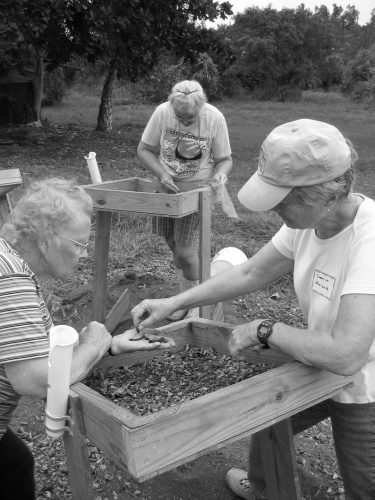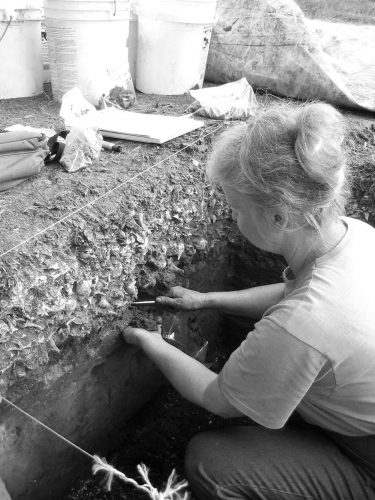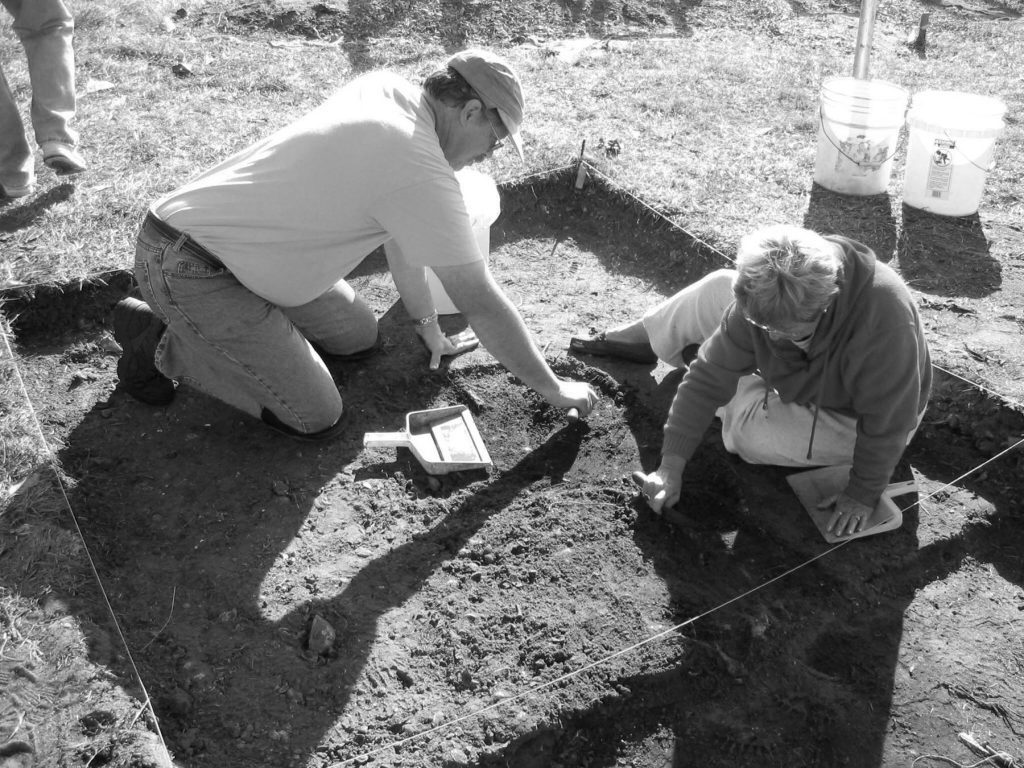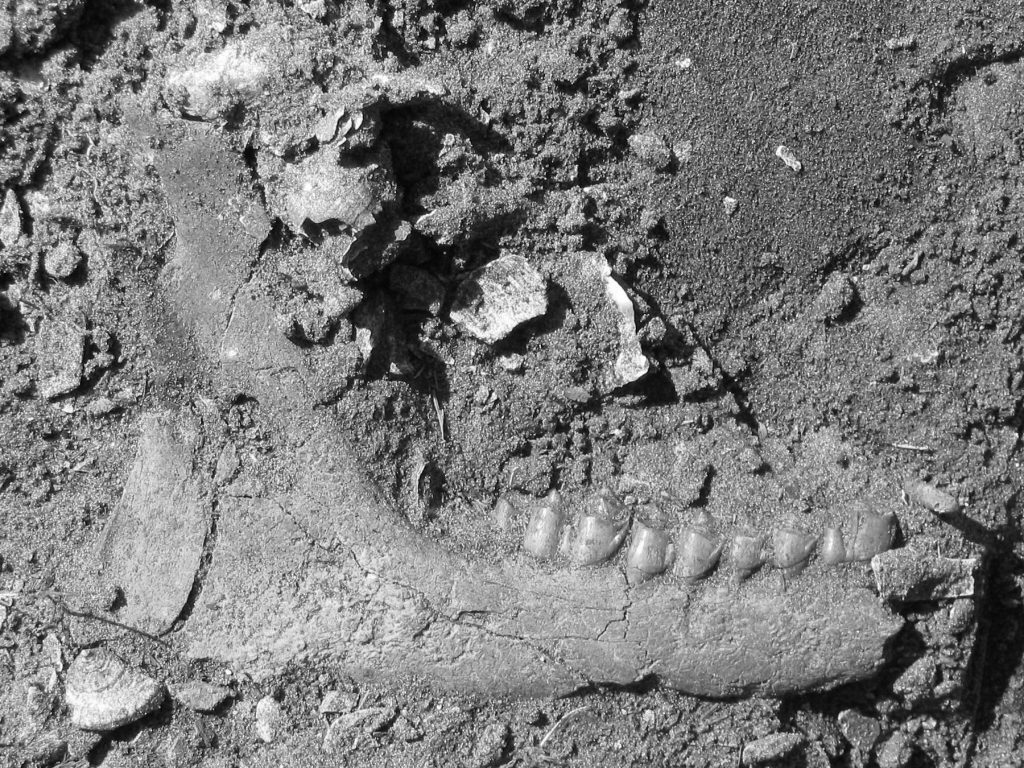Excavations and labwork for the 2003- 2004 field season moved into high gear in November, and have continued through the winter season, with considerable volunteer help.

excavated sediments. Photo by John Worth
As of mid-February, some 25 square meters have been opened in a block excavation that originally started a year ago (see Friends newsletter, March 2002).
Although the dig is still in progress, and some of the most important information still remains to be examined both in the field and the lab, the project has already shed new light on the early inhabitants of the Pineland site.
The focus of the current work is to explore the ancient human occupation along the landform known as Surf Clam Ridge. This ridge runs north- northwest to south-southeast, and parallels Citrus Ridge just inland to the east. Excavations have revealed a blanket of shell and other debris across the summit of Surf Clam Ridge, and pottery and radiocarbon dates indicate that this material accumulated along the ridge during the 6th century A.D. Amid the abundant and diverse quantities of whelk, conch, clam, scallop, and oyster shells, one distinct activity “floor” was identified, including an oblong firepit or hearth with many charred animal bones, as well as a scattering of large fragments of pottery bowls and shell anvils and other tools.
Several bone beads, a charred chert spearpoint base, a quartzite abrading stone, and a soapstone pipe bowl fragment were also recovered. Shell-filled pits and trenches exposed at the base of this layer may also represent architectural features. The hearth was radiocarbon dated to between A.D. 420 and 580, probably falling in the latter part of that range.
The 6th-century shell midden lies directly on top of an earlier black sand midden, which seems to represent an occupational floor dating to roughly A.D. 450-500. This layer is devoid of shells, but contains many larger scattered pottery sherds. In addition, the rich sand deposit contains charred plant remains and traces of bone and shell that are being systematically sampled for analysis by zooarchaeologist Irv Quitmyer at the Florida Museum of Natural History and archaeobotanist Lee Newsom at Penn State University.

One test pit has recently been excavated well below this black sand midden, revealing that it lies upon a thick and relatively artifact-free coarse gray sand deposit that contains many small articulated marsh-clam shells typical of the estuarine grass flats just offshore and west of Pineland. Although many postholes both large and small penetrate this sand from the 5th-century floor above (and these may ultimately provide firm evidence for early Calusa residential architecture), evidence is rapidly accumulating to confirm the earlier hypothesis by Karen Walker and her colleagues that this sand deposit was laid down by a storm surge. In fact, topographic data now suggest that virtually the entire elevation of Surf Clam Ridge is comprised of this storm deposit and subsequent human habitation on its summit. Soil scientist Sylvia Scudder at the Florida Museum of Natural History is conducting studies of these sediments to explore their origins.
The base of the ridge comprises a heavily concreted 3rd- or 4th-century shell midden dominated by surf clams, with a thin black sand midden just above it, and a thick, and bone-filled black sand midden underneath it. A shell from the top of this midden has been radiocarbon dated to A.D. 220-360. Below these deposits lies a mottled gray sand deposit that gradually grades into an orange-yellow sand, although there is an ephemeral oyster-midden roughly 20 cm (8 inches) above modern mean sea level at Pineland. Work is continuing even as we go to press, and future issues will update our progress. Visitors are always welcome at the dig site.
This article was taken from the Friends of the Randell Research Center Newsletter Vol 3, No. 1. June 2004.


